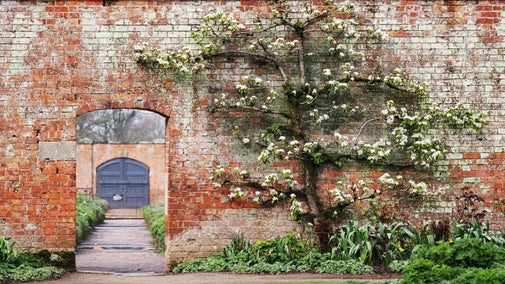
Attingham Park's collections
Explore the objects and works of art we care for at Attingham Park on the National Trust Collections website.

From ancient landscapes to mansion restoration, to then becoming home to a pioneering college, as we delve into the history of the Attingham Estate we can see that it has witnessed a lot of change and played a special role in the lives of many local people.
Attingham's Estate has been shaped by the rivers that converge on it, the Tern and Severn. The rich productive soil in this fertile valley of the two rivers provided water, food and transport. Attingham’s earliest settlers found this to their liking, with lots of evidence of human activity from Iron Age field systems and Bronze Age barrows to the Roman city of Viroconium (now known as Wroxeter) and Saxon palaces.
Built for the first Lord Berwick in 1785, and replacing Tern Hall, Attingham Hall and its beautiful parkland were owned by one family for more than 160 years. As their fortunes rose and fell, the family proved themselves to be spenders, savers and saviours - providing a fascinating story of love and neglect, the marks of which still stand in Attingham’s rooms today.
The Hill family, later to become the Lords Berwick, bought the original piece of land at Attingham in 1700. It came indirectly from land taken from Haughmond Abbey during the Dissolution. Over the next century, the family added to it until there were over 8,000 acres, extending right up into Shrewsbury.
Tern Hall, which was built in the early 1700s was the home of the Hill family. Later, it was incorporated into the 'new' mansion built in the 1780s
The family made their money through politics, the acquisition of land, moneylending and mining. However, not all of them proved to be so good at managing their great fortune.
The work of the 8th and last Lord Berwick, Thomas, and his wife Teresa, to restore the mansion meant that half of the estate was sold off in the first half of the 20th century, leaving nearly 4,000 acres that are still managed today.

It's over 220 years since the landscape you see at Attingham today was designed by Humphry Repton, the great landscape designer of the late 1700s and early 1800s. Repton worked at Attingham in the earlier stages of his career and his ideas about landscape design continue to influence designers today.
Repton was a designer, presenting his clients with a 'Red Book' of paintings and drawings of before, and after, his suggested improvements, he did not oversee the carrying out of the improvements his designs suggested.
Thomas, 2nd Lord Berwick commissioned Repton in 1797 to work on proposals for his land at Attingham. He was paid a stipend of one hundred guineas a year for two visits. Repton completed his ‘Red Book’ the following year and Thomas went on to carry out a number of his suggestions, such as re-routing the main driveway to the Mansion, to create a more impressive view when approaching it by carriage, on horse, or foot.
Attingham is one of the few landscapes to have Repton’s original 'Red Book' of designs in its collection, as well as the majority of his improvement still evident in the landscape today.
Attingham was home to a pioneering Adult Education College from 1948–1976. The college offered a radical range of courses alongside more traditional options. Some classes required students to get up at 3am to listen to birdsong and sit on the roof identifying star constellations late into the night.
The Shropshire Adult Education College was an innovation, offering students the opportunity to study in the beautiful surroundings of Attingham Hall and its grounds, to people from all backgrounds and walks of life.
The college started small with only 30 resident students, to later attracting thousands of local, national and international students at its height. It’s an important chapter in Attingham’s history as a property which played a special role in the lives of many local people.

Explore the objects and works of art we care for at Attingham Park on the National Trust Collections website.

Uncover a changing story of love and neglect, of changing fortunes, revival and rediscovery inside the Regency Mansion at Attingham.

Enjoy a walk around Attingham’s restored Walled Garden and discover the seasonal top things to spot in the kitchen garden, orchard and pleasure grounds.

Discover nature and wildlife thriving on Attingham’s historic estate. From ancient trees and wildflowers to cattle and deer, there’s plenty to look out for.

Discover the ground-breaking conservation work breathing new life into the historic house at Attingham Park.

Discover how Attingham's outdoor teams maintain and conserve the 1,500 hectares of estate and parkland for visitors.

Learn about people from the past, discover remarkable works of art and brush up on your knowledge of architecture and gardens.

From landscape gardeners to LGBTQ+ campaigners and suffragettes to famous writers, many people have had their impact on the places we care for. Discover their stories and the lasting legacies they’ve left behind.